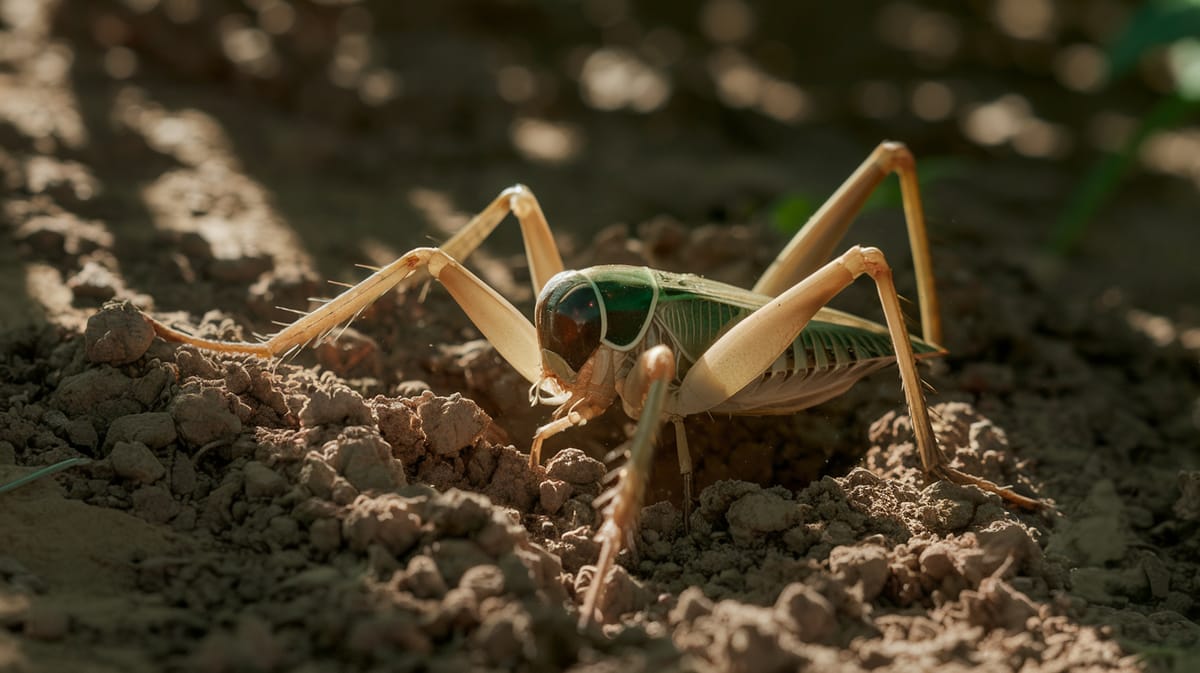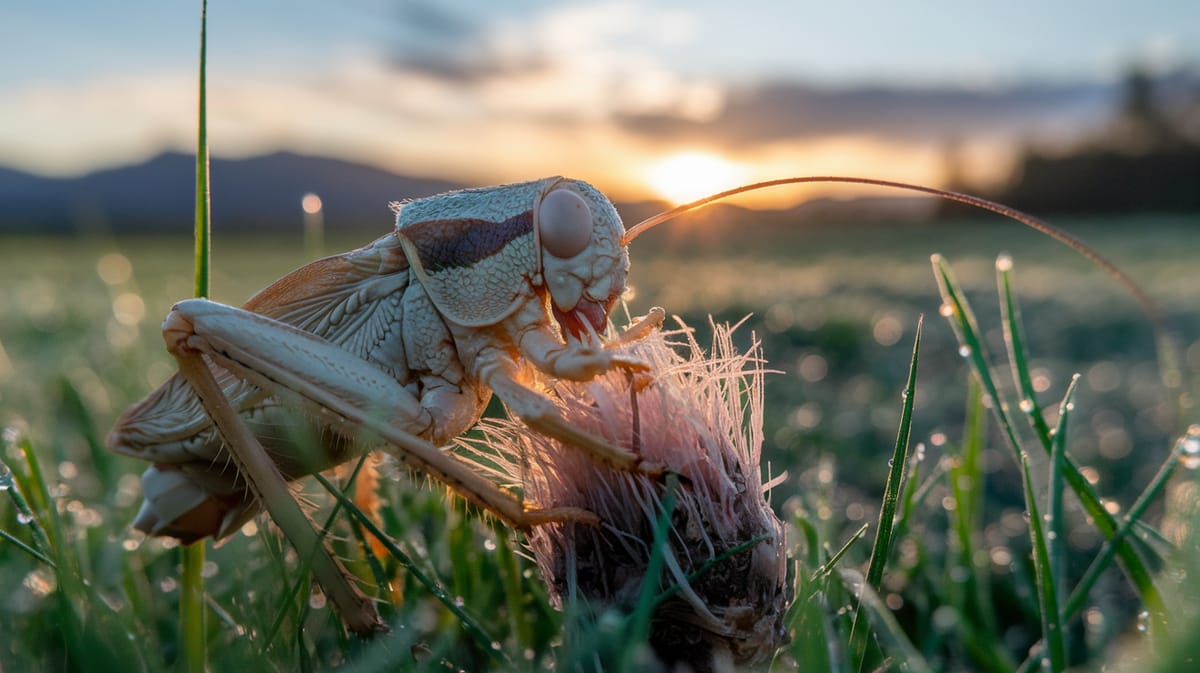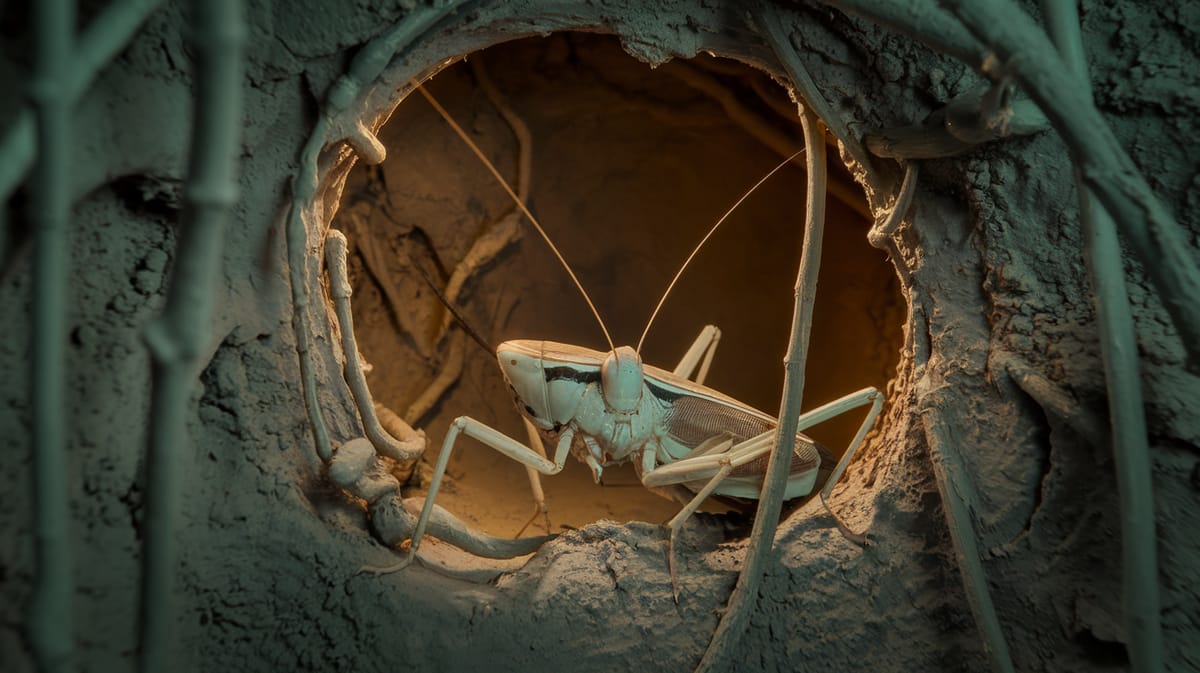Mole Cricket
Burrowing through soil with powerful forelimbs, the Mole Cricket creates intricate tunnels that benefit soil aeration and drainage. These nocturnal insects are vital for maintaining healthy ecosystems.

Key Insights at a Glance
Did You Know?
Taxonomy & Classification
Mole crickets are fascinating subterranean insects known for their specialized forelimbs, which are perfectly adapted for burrowing and navigating through soil environments. Let's understand the evolutionary journey and classification of these remarkable decomposers.
Global Presence
Mole crickets encompass about 100 species globally, thriving in diverse environments across continents, contributing significantly to soil aeration.
Evolutionary Adaptations
Originating around 30 million years ago, these insects have evolved unique adaptations, such as their spade-like limbs, to survive in underground ecosystems.
Lifecycle and Growth
A remarkable journey of transformation from Egg to Adult.
Egg
Laid in underground chambers, eggs are safeguarded from predators and environmental hazards, aiding in successful development.
Nymph
Nymphs resemble adults but lack wings, undergoing several molts for size increase and gradual wing development.
Adult
Adults emerge with full wings, capable of flight for migration and mating, ensuring species propagation.
Dietary Habits
A nocturnal feeder with efficient burrowing skills, this insect’s diet includes a variety of plant and animal matter.
| DIET TYPE | DESCRIPTION |
|---|---|
| Primary Diet | Primarily consumes roots, tubers, and other underground plant parts, causing considerable damage to crops and lawns. |
| Secondary Diet | Occasionally feeds on insects like earthworms and small arthropods, supplementing its diet with protein-rich sources. |
| Occasional | Rarely consumes seeds or decaying plant material, taking advantage of available resources in its environment. |

Behaviour and Adaptations
Discover the fascinating adaptations that enable the Mole Cricket to thrive underground.
Burrowing Expertise
Specialized forelimbs efficiently dig complex tunnels for shelter and hunting.
Sound Communication
Produces loud, distinctive calls to attract mates and establish territory.
Night Activity
Primarily nocturnal, reducing predation risk and enhancing survival.
Ecosystem Impact
Mole Crickets play a crucial role in their ecosystem by promoting soil health and supporting biodiversity.
Soil Aeration Experts
Mole Crickets burrow through soil, improving aeration and water penetration for plant roots.
Nutrient Cyclers
Their tunneling brings up nutrients, aiding in nutrient recycling and soil fertility.
Prey Providers
Serve as a food source for birds and small mammals, supporting local food webs.
Conservation Challenges
Understanding and addressing the major threats to Mole Cricket populations.
Habitat Loss
Urban development and agriculture reduce mole cricket habitats, threatening their survival.
Pesticide Use
Widespread pesticide application diminishes mole cricket populations.
Climate Change
Temperature and rainfall shifts disrupt mole cricket breeding cycles.
Frequently Asked Questions
How long do Mole Cricket live?
Mole crickets typically live for one year. They spend most of their lives underground, with their lifecycle including egg, nymph, and adult stages. The majority of their lifespan is in the soil, where they feed and grow before emerging as adults.
What do Mole Cricket eat?
Mole crickets primarily feed on roots, tubers, and other underground plant material. They can cause significant damage to crops and lawns due to their burrowing and feeding habits. Some species may also consume small insects and other soil invertebrates.
Are Mole Cricket poisonous?
Mole crickets are not poisonous to humans or pets. While they can cause damage to plants, they pose no direct threat to human health. Their main impact is agricultural and horticultural due to their feeding habits.
Are Mole Cricket endangered?
Mole crickets are not considered endangered. They are widespread in many regions and are often seen as pests due to their potential to damage crops and lawns. Various control measures are used to manage their populations in affected areas.
What do Mole Cricket symbolize?
In some cultures, mole crickets symbolize grounding and connection to the earth due to their subterranean lifestyle. They may also represent persistence and resilience, reflecting their ability to thrive underground despite environmental challenges.
Do Mole Cricket bite?
Mole crickets do not bite humans. They have strong forelimbs for digging but lack the mouthparts necessary for biting or stinging. Their primary interaction with humans is as pests, affecting plants rather than posing a direct threat to people.
What color are Mole Cricket?
Mole crickets are usually brown or tan, which helps them blend into their soil environment. This coloration provides effective camouflage against predators. Their bodies are covered with fine hairs, and their color can vary slightly depending on the species and habitat.
Does a Mole Cricket have wings?
Yes, adult mole crickets have wings. They can fly short distances, usually during mating season when they seek new areas for colonization. Despite having wings, they spend most of their lives underground, making flight a secondary mode of movement.
What does a Mole Cricket look like?
Mole crickets have cylindrical bodies, strong forelimbs adapted for digging, and a velvety texture. They are about 1 to 2 inches long, with a pair of wings and long antennae. Their appearance is distinctive, with spade-like forelimbs that resemble those of a mole.
Is a Mole Cricket an insect?
Yes, a mole cricket is an insect. It belongs to the order Orthoptera, which also includes grasshoppers and crickets. Like other insects, mole crickets have a three-part body structure—head, thorax, and abdomen—and undergo a lifecycle that includes egg, nymph, and adult stages.
Related Insects
Discover insects with similar characteristics to Mole Cricket - including shared habitats, diets, and taxonomic classifications
Share this profile
Help others discover Mole Cricket
